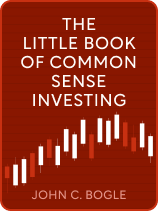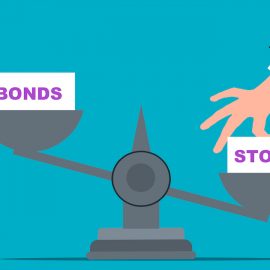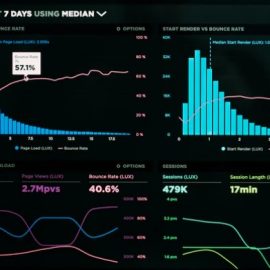

This article is an excerpt from the Shortform book guide to "The Little Book of Common Sense Investing" by John C. Bogle. Shortform has the world's best summaries and analyses of books you should be reading.
Like this article? Sign up for a free trial here.
What’s the difference between mutual funds and index funds? Which gives a higher return on investment?
According to John Bogle, the author of The Little Book of Common Sense Investing, mutual funds generate significantly lower ROI than index funds. Furthermore, the gap between mutual funds’ ROI and index funds’ ROI is set to increase in the future.
Here’s why mutual funds’ ROI is going down, according to Bogle.
John Bogle’s Future Predictions
Due to lower dividends, lower rate of gross domestic product (GDP) growth, and lower speculative returns in the current market conditions, John Bogle predicts the gap between mutual funds’ ROI and index funds’ ROI will grow larger, with index funds increasingly outperforming mutual funds.
To make his predictions, Bogle analyzes the three factors that contribute to stock prices: dividends, earnings growth, and speculative returns. First, Bogle notes that in 2017, the average dividend yield—the ratio of a company’s dividends per share compared to its share price—was lower than the historical average. Indeed, the dividend yield in 2017 was 2%, far below the historical average of 4.4%. Consequently, if you owned stock in a company at $100 per share, you could expect $2 in annual dividends per share.
(Shortform note: Since Bogle published The Little Book of Common Sense Investing in 2017, the S&P 500’s average dividend yield has dropped further; as of 2023, it sits at 1.68%, though in 2021 it dropped as low as 1.29%. So, this particular aspect of stock returns is even lower than Bogle predicted thus far.)
Second, Bogle notes that earnings growth is correlated strongly with GDP—the total value of goods and services in a given society. And although the US’s GDP has historically increased about 6% annually, projections suggest it will increase at a slower rate of 4 to 5% annually from 2017-2027. To be cautious, Bogle assumes earnings growth will increase about 4% annually.
(Shortform note: Because of the Covid-19 pandemic, which saw businesses close and unemployment rise, the US GDP actually shrunk by 3.5% in 2020. Consequently, the Dow Jones dropped 37% between February 12th and March 23rd of that year. Despite this crash, however, the market quickly recovered, and the S&P 500 actually ended 2020 up 16%.)
Finally, Bogle agrees with Wall Street projections that P/Es—price-to-earnings ratios indicating how much investors would pay per dollar of earnings growth, which are the best proxy for speculative returns—will decrease from 23.7 in 2017 to about 20 in 2027. This decrease, he asserts, would lead to a 2% drop in speculative returns.
(Shortform note: Since Bogle’s predictions in 2017, P/Es have fluctuated dramatically. In December of 2020, for example, P/Es reached 39.9 for the S&P 500, nearly twice their level in 2017. In September of 2022, however, P/Es were at 19.2, just below Bogle’s prediction of 20 in 2027. So, it remains to be seen whether Bogle’s predictions will prove accurate.)
Considering these factors, Bogle predicts that the average market return will be about 4% in 2017 through 2027: 2% from dividends, 4% from earnings growth, and -2% from lower speculative returns. This falls well short of the market’s average return of 9.5% since 1900.
However, this 4% market return ignores two costs: inflation, and the costs of investing in mutual funds versus index funds. Inflation, Bogle assumes, will continue to rise about 2% annually, meaning the 4% market return will amount to 2% in real value. Additionally, Bogle assumes that actively managed mutual funds will cost 1.5% annually, while low-cost index funds cost about 0.1% annually.
(Shortform note: Bogle’s estimated costs of mutual funds vary slightly throughout The Little Book of Common Sense Investing. For example, when he sums the costs of expense ratios, sales loads, and portfolio turnovers, he concludes that mutual funds cost between 2-3% annually, as opposed to 1.5% here. To stay true to the book, we’ll stick with the estimates he uses in each respective section, even if they differ slightly.)
Consequently, we can actually expect mutual funds to return about 0.5% annually, and low-cost index funds to return about 1.9% annually. To recap:
Average market return: 4% → Adjusted for inflation: 2%
Mutual fund: (2% market return) – (1.5% annual costs) = 0.5% annual return
Index fund: (2% market return) – (0.1% annual costs) = 1.9% annual return
In other words, index funds will yield nearly four times greater annual returns than mutual funds from 2017 to 2027.
| Looking Past Returns: Investing in Socially Responsible Index Funds In his defense of traditional index funds, Bogle focuses largely on the superior returns that they deliver to investors. However, some investors have moral scruples about investing in broad index funds that include companies with dubious moral practices—Amazon, for example, has recently been criticized for allegedly inhumane working conditions. In light of these concerns, so-called “socially responsible” mutual funds have grown popular.Put simply, socially responsible funds seek to invest in companies that are environmentally, socially, and governmentally sound. Consequently, so-called “sin stocks”—such as stock in tobacco or gambling companies—are excluded from these funds. As experts have observed, ethical investing has become more popular in the 21st century. Indeed, even Bogle’s own company, Vanguard, boasts various socially responsible index funds. So, for investors who aren’t only concerned with high returns, these ethical index funds are worth considering. |

———End of Preview———
Like what you just read? Read the rest of the world's best book summary and analysis of John C. Bogle's "The Little Book of Common Sense Investing" at Shortform.
Here's what you'll find in our full The Little Book of Common Sense Investing summary:
- A simple winning strategy for novice investors
- Why index funds are superior to mutual funds
- Why bonds belong in your investment portfolio






